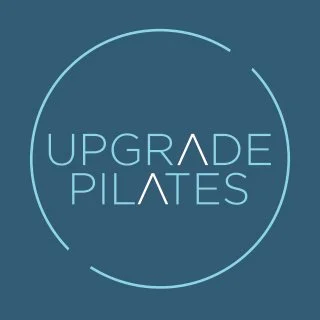Pilates for Longevity
Unlocking Longevity: How Pilates Can Help You Live Longer
Pilates is a system of exercises that has been around for nearly a century. Created by Joseph Pilates in the early 20th century, Pilates focuses on strengthening the body's core muscles while also improving flexibility, posture, and overall physical fitness. While many people may view Pilates as simply a way to tone and strengthen their bodies, the benefits of this exercise go far beyond aesthetics.
One of the most significant benefits of Pilates is its potential to improve longevity. For example, a study published in the Journal of Aging and Physical Activity found that Pilates was shown to improve functional autonomy, static balance, and quality of life (Siqueira Rodrigues et al., 2010)(1). Another study published in the Archives of Gerontology and Geriatrics found Pilates was shown to improve dynamic balance, flexibility, and strength in individuals aged 65 and older (Irez et al., 2011) (2).
While it may seem counterintuitive that a low-impact exercise like Pilates could have such a significant impact on lifespan, numerous studies have indicated Pilates can enhance both physical and mental health, leading to a longer and healthier life.
Physical Benefits of Pilates for Longevity
Pilates can improve balance and prevent falls in older adults. As we age, our bodies naturally lose muscle mass and strength, leading to a higher risk of falls and injuries. However, by incorporating Pilates into your exercise routine, older adults can improve your balance, stability, and coordination, reducing the risk of falls and increasing overall quality of life.
Pilates has been shown to improve cardiovascular health and reduce the risk of heart disease. A study published in the Journal of Exercise Rehabilitation (Jung et al., 2018)(3) found that regular Pilates practice led to a significant decrease in blood pressure and heart rate, as well as an increase in overall cardiovascular endurance. This improvement in heart health can help to reduce the risk of heart disease and other related conditions, leading to a longer and healthier life.
Pilates has been shown to improve overall physical fitness, including strength, flexibility, and range of motion. By working the body's abdominal muscles, Pilates can help to improve posture, reduce back pain, and increase overall physical function. This improvement in physical fitness can help you to maintain your independence and quality of life well into your later years.
Mental Benefits of Pilates for Longevity
Pilates has been shown to improve mental health and well-being. A study published in the Journal of Bodywork and Movement Therapies (Roh et al., 2019)(4) found Pilates can help to reduce stress and improve overall mental health, leading to a longer and happier life.
Specifically, the study found Pilates practitioners reported a decrease in anxiety, depression, and stress levels after just six weeks of practice. Additionally, Pilates has been shown to improve cognitive function and memory in older adults, helping to reduce the risk of cognitive decline and dementia.
By improving both physical and mental health, Pilates can help individuals to lead longer and healthier lives. However, to see these benefits, it's important to practice Pilates regularly and consistently.
Tips for Incorporating Pilates into Your Life
If you're interested in incorporating Pilates into your exercise routine, there are a few tips to keep in mind:
Start slow: If you're new to Pilates, start with a beginner's class or a few private sessions to learn the basics. It's important to build a strong foundation before moving on to more advanced exercises.
Be consistent: To see the benefits of Pilates, it's important to practice regularly. Aim for at least two to three sessions per week to start, and gradually increase as your fitness level improves.
Listen to your body: While Pilates can be a low-impact form of exercise, it's still important to listen to your body and avoid pushing yourself too hard. If you experience pain or discomfort, stop and talk to your instructor.
Find a qualified instructor: Pilates is a complex form of exercise requiring proper instruction to ensure you're doing the exercises correctly and safely. Look for a qualified Pilates instructor who has been trained with at least 600+ hours and certified by a reputable organisation.
Learn traditional Pilates in-studio or online from expert instructor Elaine Kwok at: info@upgradepilates.co.
References:
Siqueira Rodrigues, B. G., Ali Cader, S., Bento Torres, N. V., Oliveira, E. M., & Kütter, C. R. (2010). Pilates method in personal autonomy, static balance and quality of life of elderly females. Journal of Aging and Physical Activity, 18(1), 75-83.
Irez, G. B., Ozdemir, R. A., Evin, R., Irez, S. G., Korkusuz, F., & Kasikcioglu, E. (2011). Integrating Pilates exercise into an exercise program for 65+ year-old women to reduce falls. Archives of Gerontology and Geriatrics, 53(2), e89-e94.
Jung, H. S., Kim, S. Y., Lee, Y. J., & Lee, S. M. (2018). Effects of Pilates exercise on cardiovascular function in sedentary individuals: A pilot study. Journal of exercise rehabilitation, 14(6), 1048-1055. doi: 10.12965/jer.1836412.199.
Roh, S. Y., & Kim, K. T. (2019). Effects of Pilates exercise on anxiety, depression, and stress in community-dwelling older adults. Journal of Bodywork and Movement Therapies, 23(1), 49-54. doi: 10.1016/j.jbmt.2018.01.006.
Image credit: https://longevity.technology/lifestyle/what-is-life-longevity-and-how-can-i-improve-it/
